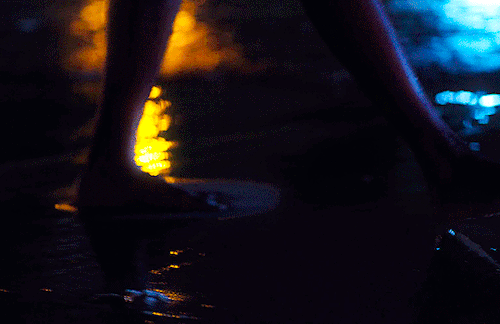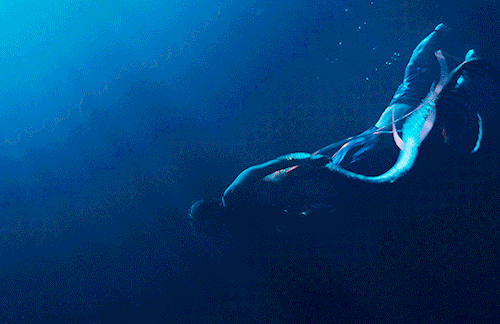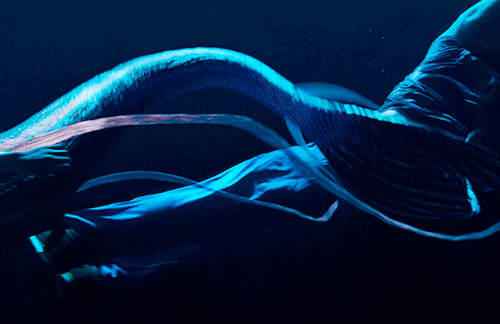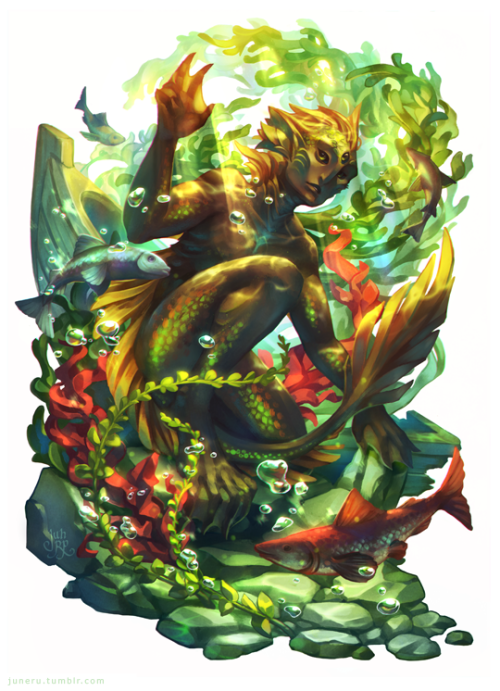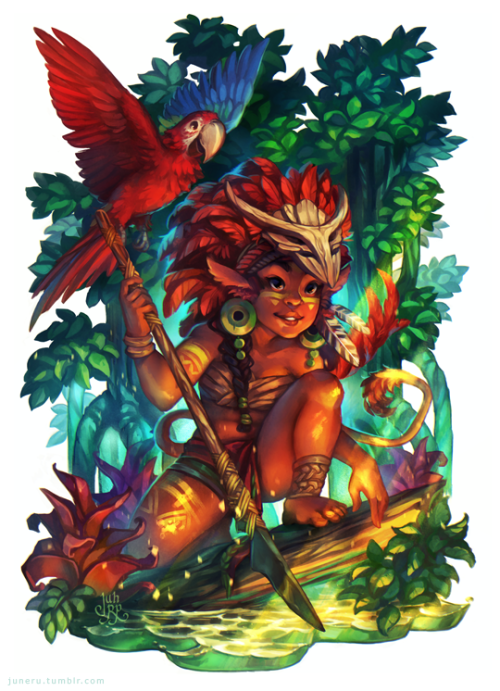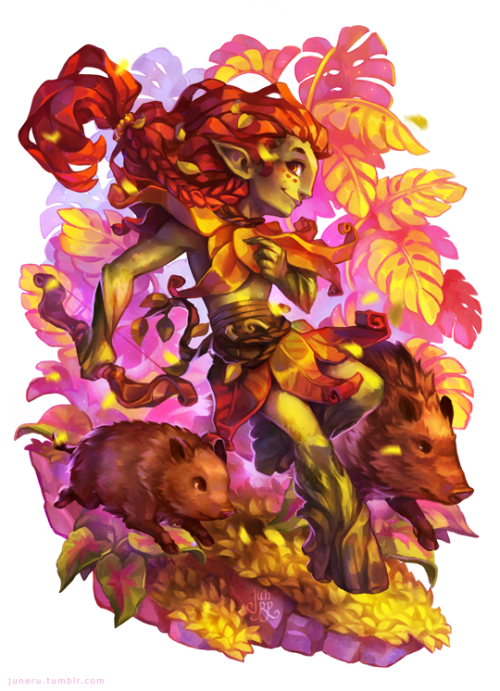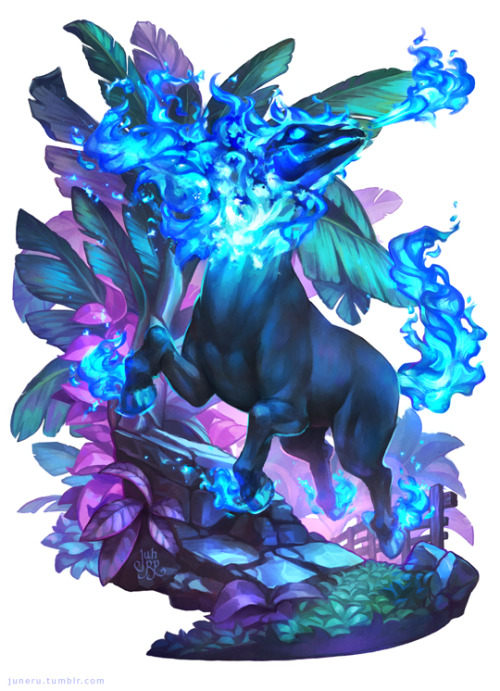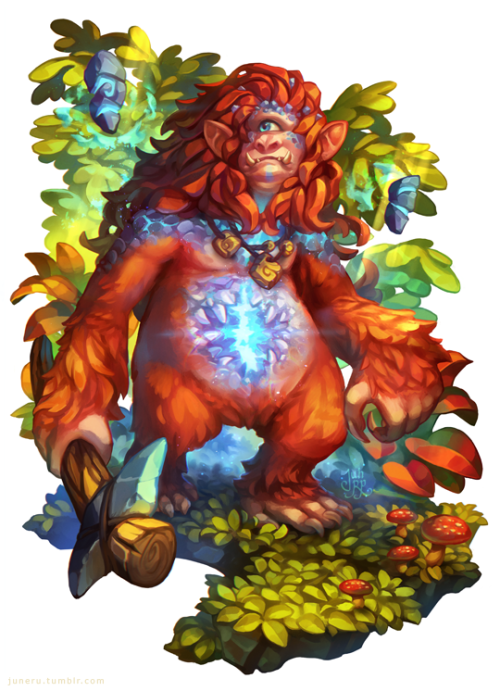#brazilian folklore
BrazilianFolklore+Iara: Also known as the “mother of the waters”, Iara is a beautiful, brunette mermaid with black hair and brown eyes. She attracts men with her beautiful and irresistible singing, which echoes through the waters and forests. The victim follows Iara to the bottom of a river, a place from where he never returns. The few who can escape unfortunately go crazy due to the mermaid’s spells. In this case, says the legend, only a ritual performed by a shaman can free the man from the spell.
InvisibleCity(2021)
Post link
The Capelobo is a strong anteater-like humanoid creature from the brazilian folklore. It’s said to pierce its victims skulls and suck their brains out.
Illustration for “Folcollab” - an art collab between friends in which we draw our versions of a figure from the Brazilian folklore each month
Post link
The Caboclo d'agua is a bronze skinned water dweller from the brazilian folklore, he scares away fishermen and boats and may chase away the fish from the nets but if treated well by the fishermen, then may even bring good luck for the fishing.
Illustration for “Folcollab” - an art collab between friends in which we draw our versions of a figure from the Brazilian folklore each month.
Post link
The Boto myth in the brazilian folklore is about an enchanted pink river dolphin that shapeshifts into a handsome man dressed in white at night to seduce women at festivals, also a myth originated to justify out of marriage pregnancies.
Illustration for “Folcollab” - an art collab between friends in which we draw our versions of a figure from the Brazilian folklore each month.
Post link
The Curupira is a mythological red haired fairie-like creature from the brazilian folklore, it is said to have backwards feet to confuse and scare away poachers and hunters. He is commonly depicted with or riding a peccary.
Illustration for “Folcollab” - an art collab between friends in which we draw our versions of a figure from the Brazilian folklore each month.
Post link
In the brazilian folklore, the Boitatá is known as a huge fire snake, protecting woods against wildfires and intruders who may cause them, it’s also a variation of the “Will-o’-the-wisp”
Illustration for “Folcollab” - an art collab between friends in which we draw our versions of a figure from the Brazilian folklore each month during a year.
Post link
The Headless Mule is well known in the brazilian folklore, having many origin tales, most commonly being of a woman who was cursed for her sins, turning into a headless mule that would gallop around at night with fire bursting out of it’s neck.
Illustration for “Folcollab” - an art collab between friends in which we draw our versions of a figure from the Brazilian folklore each month during a year.
Post link
Cuca in the Brazilian folklore is mostly known as an old alligator witch that takes disobedient children.
Illustration for “Folcollab” - an art collab between friends in which we draw our versions of a figure from the Brazilian folklore each month during a year.
Post link
In the brazilian folklore, the Mapinguari is known as a large one-eyed bipedal creature with a mouth in it’s belly. It’s like the Amazon “Bigfoot”.
Illustration for “Folcollab” - an art collab between friends in which we draw our versions of figures from the Brazilian folklore.
Post link
Worldwide Bestiary — Anhangá
Anhangá(orAhiag̃) is a spirit from brazilian native folklore, more specific from the indigenous tribes tupi and Mawé. It’s a shapeshifting spirit, but his most common form is known as a white deer with red eyes; his other forms include human shape and other animals. According to each form the Anhangá takes, he has a different name in tupi language.
It’s said that Anhangá is a protector of the nature. He hunts and punish those who hunt animals in it’s territory, some even say that he kills people and feast on their bodies. The main sign he is near is an acute whistle before he takes the hunt to him, then he makes the hunter have visions, fever and cause even madness in his victims. According to some local legends, you can also ask for the help of Anhangá if you are being pursued by a wild animal by screaming “Valha-me Anhangá!”. Others say it’s possible to have a deal with him, offering good tobacco in exchange for one successful hunt in his territory.
The Jesuit used the word Anhangá to refer to the Christian demon. This was because of Anhangá (which means “old soul”) is similar to the term “Anhanguera”, which means “old devil”.
Post link

Image © @a-book-of-creatures, accessed at his website here
[The auñ pana is a creature I first heard about through @a-book-of-creatures, and all of the sources I can find for it online are paraphrases of that entry. It’s a monster from the Yanomani, and exists in print in ethnological studies that are difficult to get a hold of. So my version likewise spins off of the short, but intriguing, info on ABOC. They school with other (undescribed) killer fish, which inspired me to give them the powers of a trident of fish command, and they seem to turn people into animals more out of spite than anything, which inspired me to take them in the Mafiosi direction I went. Also, I was recently reminded of The Sign of the Seahorse, a children’s book where a grouper crime boss is the villain.]
Auñ Pana
CR 9 LE Magical Beast
This creature looks like a fish the size of a rhinoceros, except that it has shaggy hair growing from its sides and belly. It has two slender, disturbingly human-looking arms, and a short snout packed with rows of razor sharp teeth.
The auñ panas are lords of the tropical rivers in which they dwell. A hybrid of arapaima and piranha, they are steady and determined swimmers, but they don’t have to be particularly fast. They use their magical mastery of fish and other aquatic animals to charm them into complacency long enough for them to tear their prey to shreds. Although they are deadly in the water, they can also leave the water and drag themselves on land using their forelimbs (albeit very slowly).
Auñ pana are social among themselves, existing in a strict hierarchy based on age, skill and ferocity. These schools work to control larger territories, and to exact tribute from sapient creatures above and below the water. An auñ pana demands exotic foods (particularly plant or animals that live in dry land), treasure and the occasional life as sacrifices, and disrupt fishing, destroy boats or bridges, and otherwise make life miserable for those that refuse. Like a good protection racket, they do add an element of stability to the lives of their charges, keeping other aquatic monsters at bay unless they join the gang. They also have been known to make examples of those that resist or refuse them by transforming them into animals—pigs and monkeys are popular choices.
Auñ Pana CR 9
XP 6,400
LE Large magical beast (aquatic)
Init+5;Sensesdarkvision 60 ft., Perception +14, scent
Defense
AC23, touch 14, flat-footed 18 (-1 size, +5 Dex, +9 natural)
hp115 (11d10+55)
Fort+12,Ref+12,Will+9
Immunepoison;Resistacid 10, electricity 10; SR20
Offense
Speed5 ft., swim 40 ft.
Meleebite +15 (2d8+5 plus bleed/19-20), 2 slams +15 (1d6+5 plus grab)
Space10 ft.; Reach5 ft. (10 ft. with slam)
Special Attacks bleed (1d8),fish command
Spell-like Abilities CL 11th, concentration +14
Constant—speak with animals
1/day—baleful polymorph (DC 18)
Statistics
Str21,Dex21,Con21,Int12,Wis18,Cha16
Base Atk +11;CMB+17 (+21 grab or sunder); CMD32
FeatsGreater Sunder, Improved Critical (bite), Improved Sunder, Iron Will, Power Attack, Skill Focus (Stealth), Staggering Critical (B)
SkillsIntimidate +14,Knowledge (nature) +8, Perception +14, Stealth +14, Swim +17
LanguagesAquan, Common, speak with animals
SQamphibious,double damage against objects
Ecology
Environmentwarm freshwater
Organizationsolitary, pair or school (3-8)
Treasurestandard
Special Abilities
Double Damage Against Objects (Ex) An auñ pana that makes a full attack against an object or structure deals double damage to it.
Fish Command (Su) Three times per day as a standard action, an auñ pana can attempt to charm animals with a swim speed, as per the charm animal spell (CL 11th). An auñ pana can affect up to 22 HD of animals at a time, but the animals must be within 60 feet and no two animals can be more than 30 feet from each other. An animal can resist this ability with a successful DC 18 Will save—it gets a +5 bonus to this save if it is currently in combat with the auñ pana or its allies. The save DC is Charisma based.
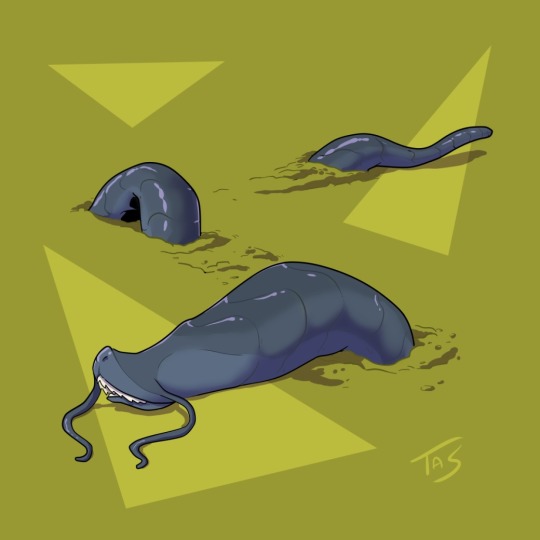
Image © Traci Shepard, accessed at Arcane Beasts and Critters here
[By the standards of cryptids, the minhocão has a pedigree in legitimate science, first reported in Europe by famed botanist Augustin Saint-Hilaire and later discussed in Nature Magazine. It was Saint-Hilaire’s opinion that the minhocão was a large undescribed species of lungfish, although not nearly as large as the 20-50 meter claims that sometimes get thrown around. Since then, different cryptozoologists have played pin the character on the animal, with Bernard Heuvelmans claiming it was a giant burrowing glyptodont (!) and Karl Shuker giving it a caecelian identity. It’s this latter one that shapes most existing artistic representations, and what I went with for my version.
What do I think? I think that there may well have been a lungfish at the heart of some of the reports, but it’s probably just misidentifications and folklore surrounding the anaconda.]
Minhocão
CR 10 N Animal
This creature looks something like an immense earthworm, except that earthworms do not have fang filled jaws, or short tentacles on the upper jaw. Its skin is leathery, and small scales are visible beneath the surface.
The minhocão, or giant caecilian, is an enormous burrowing amphibian found in poorly drained soils in warm environments. They are ambush hunters, preying on creatures both above and below the surface. Giant vermin are a favored prey, but if these are scarce, they will grab livestock, megafauna or even giants in their jaws and drag them below ground to devour. They are sometimes hunted by purple worms and other even stronger predators, but defend themselves with a hemolytic toxin in their skin. A creature that touches a minhocão with its bare hands (or worse, mouth) have their blood cells die, fluid accumulate under their skin, and eventually die of liver and kidney failure.
A minhocão is completely blind. Its eyes are covered by skin, and it senses the world with nostrils set on short tentacles and a powerful sense of vibration. They are typically solitary, but females are attentive parents. They grow extra layers of fatty skin along their bodies, which the juveniles eat, regrowing it and repeating the process several times before the young minhocãos are strong enough to hunt on their own. They prefer subtropical climes to tropical ones.
Minhocão as Animal Companions
Starting Statistics: Size Medium; Speed 20 ft., burrow 20 ft., swim 20 ft.; AC +3 natural armor; Attack bite (1d8); Ability Scores Str 12, Dex 16, Con 13, Int 1, Wis 13, Cha 8; Special Qualities blind, blindsight
7th-Level Advancement: Size Large; AC +3 natural armor; Attack bite (2d6); Ability Scores Str +8, Dex -2, Con +4; Special Qualities grab, toxic skin (Con based DC)
Minhocão CR 10
XP 9,600
N Gargantuan animal
Init +6; Senses blindsight 60 ft., blind, Perception +10
Defense
AC 24, touch 8, flat-footed 21 (+2 Dex, +16 natural, –4 size)
hp 138 (12d8+84)
Fort +14, Ref +10, Will +7
Immunegaze attacks, visual spells and effects
Defensive Abilities toxic skin
Offense
Speed 20 ft., burrow 20 ft., swim 20 ft.
Melee bite +18 (4d6+19/19–20 plus grab)
Space 20 ft.; Reach 20 ft.
Special Attacks swallow whole (2d8+19 bludgeoning, AC 18, 13 hp)
Statistics
Str 36, Dex 14, Con 23, Int 1, Wis 13, Cha 8
Base Atk +9; CMB +26 (+30 grapple); CMD 38 (can’t be tripped)
FeatsBlind-fight, Improved Critical (bite), Improved Initiative, Iron Will, Power Attack, Toughness
Skills Perception +10, Stealth +11, Swim +21; Racial Modifiers +8 Stealth
SQhold breath
Ecology
Environment warm swamps or underground
Organization solitary or pair
Treasure none
Special Abilities
Blindsight (Ex) A minhocão’s blindsight is based on detecting scent and vibrations. If it is in an area of strong scent, such as a stinking cloud spell, it is treated as having tremorsense instead.
Toxic Skin (Ex) A creature that strikes a minhocão with an unarmed strike or natural weapon exposes itself to the creature’s poisonous skin. Skin—contact;save Fort DC 22; frequency 1/round for 4 rounds; effect1d4 Constitution damage; cure 1 save. The save DC is Constitution based.

Image © H. Kyoht Luterman, accessed at their deviantArt here
[The capelobo is a Brazilian monster that has a decent amount of art and internet attention, but very little in terms of reliable sources online in English. Doing some digging into Portuguese language websites with Google Translate, this seems to be par for the course in Brazil as well. Whether it has the head of an anteater or a tapir, is it a shapeshifter or not, does it eat brains or blood, and the like vary in terms of who’s telling the story. So this version takes inspiration from the (not universal) idea that very old humans can turn into a capelobo, as well as their supposed fondness for eating puppies and kittens.]
Capelobo
CR 14 CE Monstrous Humanoid
This creature resembles a bipedal anteater, more than half again the height of a man. Its arms are long and hang below its knees, with huge curving claws. It has circular hooves on its hind feet.
Many people fear death, and there are many ways that people attempt to avert death. Some of these ways are terrible and predatory. Someone who uses arcane methods to prolong their life by draining it from others may transform into a hideous monster—a capelobo. They are functionally immortal, only dying if slain by violence. They continue their hunt for perpetual youth, killing and eating juvenile animals and people and sucking out their brains and glandular tissue. They will also eat the brains of adults who come hunting for them or whom they stumble upon, but capelobos complain that such meals are bland by comparison.
Capelobos enjoy causing terror, and they mix stealthy movements with ear piercing screams. Those close to a screaming capelobo become temporarily insane with panic, and may either flee into the wilderness or begin attacking their own friends and loved ones. In the confusion, the capelobo strikes. It grabs the youngest looking creature, tearing into it with its claws before extending its long tongue into an ear, nostril or wound. It rapidly sucks out the brains of its victims, leaving them dead with an empty skull. A capelobo cannot be tracked by anything less than magical means, but will sometimes leave a single, perfectly circular hoof print as a mocking calling card.
A capelobo stands between eight and nine feet tall.
Capelobo CR 14
XP 38,400
CE Large monstrous humanoid
Init+9;Sensesdarkvision 60 ft., low-light vision, Perception +19, scent
Defense
AC29, touch 15, flat-footed 23 (-1 size, +5 Dex, +1 dodge, +14 natural)
hp195 (17d10+102)
Fort+13,Ref+15,Will+14
DR15/cold iron; Immunecurses, disease, fear, poison; SR25
Defensive Abilities freedom of movement,hungry for life
Offense
Speed40 ft.
Melee2 claws +23 (2d8+7/19-20 plus grab), bite +22 (1d6+7)
Space10 ft.; Reach10 ft.
Special Attacks brain drain, maddening scream, rend (2 claws, 2d8+10)
Spell-like Abilities CL 14th, concentration +19
Constant—freedom of movement, pass without trace
Statistics
Str26,Dex21,Con22,Int13,Wis19,Cha20
Base Atk +17;CMB+25 (+29 grapple); CMD41
FeatsBlind-fight, Combat Reflexes,Dodge, Great Fortitude, Improved Critical (claw), Improved Initiative, Power Attack, Skill Focus (Stealth), Vital Strike
SkillsAcrobatics +17 (+21 when jumping), Climb +22, Intimidate +20, Perception +19, Stealth +23, Survival +19, Swim +223
LanguagesAbyssal, Common
Ecology
Environmentwarm forests and plains
Organizationsolitary
Treasurestandard
Special Abilities
Brain Drain (Ex) When a capelobo begins its turn grappling an opponent, it can eat that creature’s brains, dealing 1d6 points of Intelligence and Wisdom drain per round. A successful DC 24 Fortitude save reduces the damage taken to 1 point of Intelligence and Wisdom drain. A creature reduced to 0 of either of these abilities is killed and cannot be returned to life with any effect that requires an intact body. The save DC is Constitution based.
Hungry for Life (Su) A capelobo heals from both positive and negative energy effects.
Maddening Scream (Su) As a standard action, a capelobo can give a maddening scream. All creatures within 60 feet must succeed a DC 23 Will save or be shaken and confused for 17 rounds. A creature that successfully saves against this effect is immune to that capelobo’s maddening scream for the next 24 hours. A creature that takes damage while under this effect must succeed an additional DC 23 Will save or be panicked for 1d4+1 rounds. This is a mind-influencing sonic, fear effect, and the save DC is Charisma based. Capelobos are immune to this effect.


